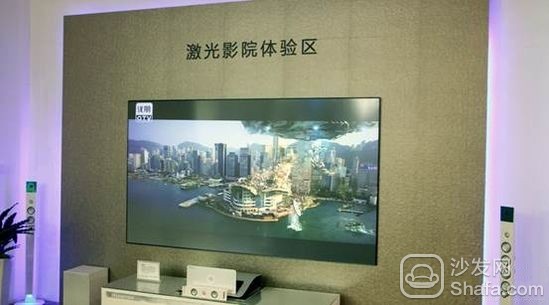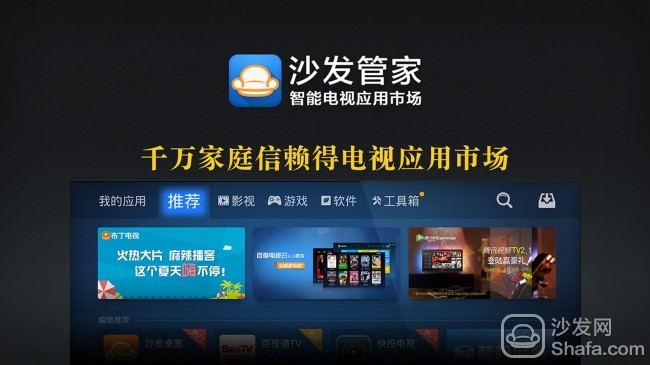
On November 15th, Guangfeng Optoelectronics demonstrated its celebrity product at the Hi-tech Fair. It was the first large-screen laser smart TV that won the “Future Product Award†at CES Consumer Electronics Show last year. . "2015 will be the first year of laser television," said Li Wei, founder and chairman of Everlight Optoelectronics. According to the September China Electronics Video Industry Association’s first white paper showing the development of new display technologies for China's color TVs, China’s laser TV market share will reach 35 billion yuan in 2015, becoming an important force in the color TV market. “Guangfeng Optoelectronics occupies the most upstream core technology, and its self-developed phosphor laser technology (ALPD) has become a technology license for TV manufacturers such as LG and Changhong.†Li Hao said at the Hi-tech Fair: “Before All of us are OEMs for foreign manufacturers. Today, we call the international color TV giants to provide us with OEMs.†On the same day, Li Jie’s laser TV assembly lineup was powerful: the display device was provided by Texas Instruments and the screen was customized in Japan. LG OEM production, eventually affixed Guangfeng Optoelectronics brand.
"I can sell it expensively."
The TV market has been surging over the past year. LeTV, Xiaomi, and iQiyi successively launched “Internet TV†to subdue the market with subversive low prices. Thousand Yuan TV has become another classic case of “Internet Thinkingâ€.
However, Li Xin believes that "hardware free, content charging" is not the only service method. "Now what mobile phone is expensive and good is Samsung and Apple. The former has the core technology of the display, while the latter has the integrated system based on ios. This is the reason to support its high price." Li Yu believes that providing products It depends on what services you provide to consumers. Free is just one of them. "A lot of Internet companies do not have hardware core technologies and can only go through value-added services."
In the interview, Li Hao often showed his self-confidence in the self-developed ALPD technology. Ten years ago, he established YLX in the United States and independently developed the ALPD. Five years later, he introduced the talented person as the “One Thousand Talents Program†of the Central Organization Department to return to Shenzhen to start a business. According to its introduction, "Guangfeng Optoelectronics has independently developed 500 patents, of which 80% are invention patents."
“We have to pay about 10 million patent management fees to intellectual property offices every year for the past three years,†said Li Zhen. “Guangfeng Optoelectronics is located in Chahua Village, Xili Town, Shenzhen. Although it is a typical township enterprise, we have mastered core technologies. I can sell you more expensive than you.†It is reported that its current show screen has two versions, the price is 95,000 and 120,000 respectively.
Who has the subversive advantage?
However, Li Wei's "arrest" has not been recognized by traditional TV manufacturers. At present, domestic TV manufacturers are more lenient with the future of organic electro-optic display (OLED) technology, and laser technology is marginalized. “From LED to OLED is at least an extension of semiconductor technology, but lasers are relatively alternative,†said Zhang Yuru, vice president of BOE’s BOE’s BOE. In addition to Changhong, which is licensed by Guangfeng Optoelectronics Technology, and Hisense, which is independently researched and developed, there is no domestic manufacturer of laser terminal products.
However, Li Zheng is not surprised at this question. "The current state of mind of LCD panel makers is the same as that of Nokia a few years ago, and it continues its own logic. The real subversion needs an outsider like Apple." Li Wei said that LCD TVs have tens of billions of investment in the 8.5th generation of LCD TVs, and light Fengguang’s output of 100,000 units last year only cost hundreds of millions. "There is no cost advantage when the LCD is more than 75 inches, and the mass-produced laser TV can also reduce the cost."
The big screen is the "subversive advantage" of Li Zhi's understanding of the laser in the LCD camp. "Laser TV is not really a TV. It is a home theater." He told Nandu reporters that laser television is not changing the flat-panel TV market but moving cinemas to families.
Open technology promotes industrialization
In May of this year, Guangfeng Optoelectronics and Sichuan Changhong strategically collaborated with ALPD to license the latter to produce terminal products. In September of this year, Guangfeng Optoelectronics and Zhongying Group established a joint venture Zhongying Guangfeng to promote the laser screen. “We are good at upstream technology, and the rest is completely open to downstream manufacturers, and we are cooperating with the promotion of content and channels. Over the past ten years, we have been working on technology, and now our technology is at the top of the mountain, followed by industrialization.†If you say it.
In fact, even in the field of laser display, ALPD is not the current mainstream of cinema. The RG B laser technology controlled by Belgian Barco Company accounts for 65% of the world's film display market. ALPD is known for its low power consumption. The energy consumption of 9 lumens/watt is twice that of the latter, while RGB is a higher brightness technology with an average of 5000 lumens per 60,000 lumens of ALPD spikes. However, what Li Duo described as “the Peak†is that ALPD has achieved a breakthrough of 20,000 lumens. This is the threshold for cinema display. The content support of China Films will be beneficial to the channel promotion of its cinema. "In three years, China's xenon light theater line was replaced with a laser display," said Li Hao.
As for television, Li Wei hopes that industrialization can lower overall prices. “At present, the high price of laser TVs is mainly because the market is too small. We hope that open technology will integrate more manufacturers to promote this market.†Li Wei does not deny that the current laser television market is expensive, but he also has a timetable for this. "According to Moore's law, the price of laser TVs will drop to about 30,000 next year and gradually open up the market, and the market share can reach 30% within three years."
“I always wonder what the limits of the laser are. Now that the northern region is too long at night and the road is too dark, if one day we make a reflector on an artificial satellite, a laser beam can be used to reflect the entire area. This is lighting.†Li Lan is amazed at the future of lasers: “These are not impossible to realize, but also the ultimate ideal of Guangfeng Optoelectronics.â€
"Third-party reviews"
Zhang Bing (Director of Research, China, DisplaySearch): At present, there is no leading company for lasers.
The binding of laser technology patents and optical systems is mostly in the hands of foreign manufacturers. Like RGB technology is almost monopolized by Japan and Germany. As for fluorescence technology, most of the patents are in the hands of LG, except for Guangfeng Optoelectronics. The patent of laser technology is still dominated by foreign manufacturers. Domestic manufacturers such as Guangfeng Optronics still have a small gap.
However, Zhang Bing also said that lasers have just started in the household sector and there is no so-called leader. "This market will become more and more popular. Domestic manufacturers who focus on the vertical market will have a lot of room for development."
"market survey"
In the era of flat panel display, due to the lack of core technology, foreigners usually earn more than 70% of the product's profits, said Wang Yu, vice president of the Institute of Optoelectronics at the Chinese Academy of Sciences.
The White Paper on the Development of New Display Technologies for China's Color TVs released by the China Electronics and Video Industry Association in September pointed out that even though the market for digital TVs is still small compared to the hundreds of billions, laser televisions have a stronger impact on the 65-inch and above markets. In 2015, this market share will reach 35 billion yuan, which may become an important force for the dominant industries and brand competition of Chinese companies.
"Laser is not a new technology. It is only now beginning to penetrate the commercial projection area into the civilian color TV field." Zhang Bing, research director of DisplaySearch China, said that the laser is reflected light, which means that ambient light will cause display Impact, with professional requirements in installation and environmental regulation, it has been difficult to enter the home area. "But the demand for large-screen displays in home theaters is growing. Lasers will have market space in this segment."
As for the commercial cinema field, the RGB technology of Belgian Barco, which was established in the 50s of the last century, has occupied more than 70% of the market share. The fluorescence-inspired Blu-ray technology has gradually matured in the past five years. This technology greatly reduces the cost. Because of this technology, lasers have the opportunity to enter the home field.
Recommended installation sofa butler Download: http://app.shafa.com/
